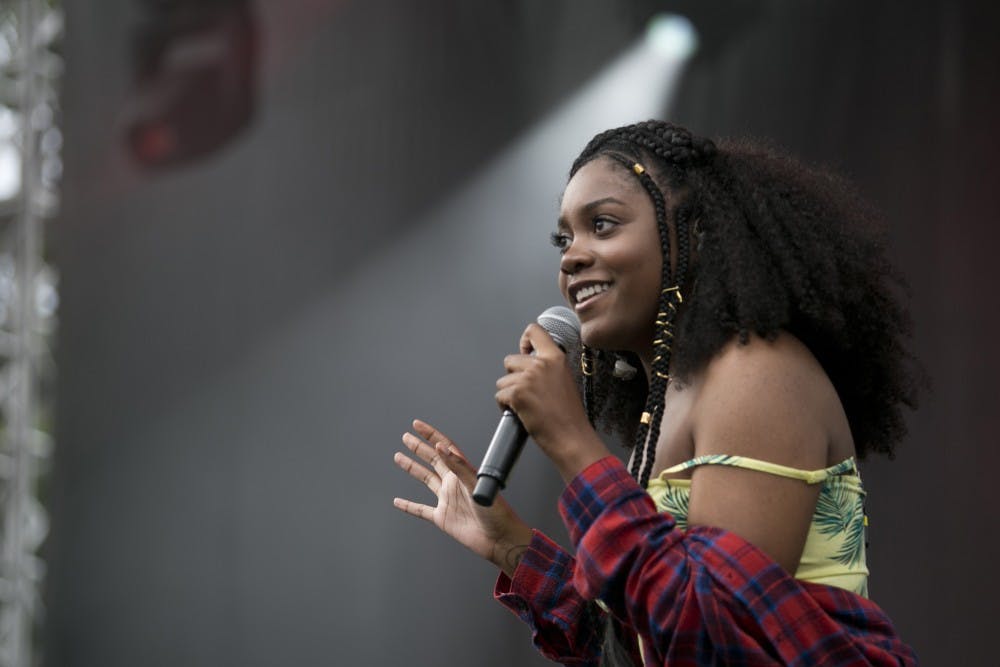Akin to several other industries, the rap, hip-hop and rhythm and blues scenes have historically been dominated by male artists. Fortunately, that is no longer the case.
From big names such as Noname and Rapsody to up-and-coming artists Princess Nokia, Rico Nasty, and Bay Area based artist Kaila Chare, women are gaining huge momentum and recognition, and rightfully so. These incredible rappers along with many other female artists are making their presence known in the game, but no matter how many streams or album sales they seem to rack up, they are never considered truly big players in the genre.
The discussion of rapper Noname on Genius.com and Twitter has largely included rhetoric such as “the best female rapper” or “the best 'up and coming' female artist” when the fact of the matter is that labeling artists and their quality of work within their respective gender category is inherently misogynistic.
It is important to applaud women and their achievements in any industry — but further than that, it is so incredibly important to applaud them for their achievements relative to every other artist in their realm regardless of their gender.
Specifying that these women artists are the best female superlatives is explicitly denying them a place alongside their male counterparts. The argument of having a best “female” anything carries the connotation that the word “best” means different things for different genders.
This problem is not exclusive to discussions of music, either. Serena Williams, despite several incredible tournament wins, an amazing comeback story after nearly losing her life during childbirth and general extreme fitness, still is regarded as the best “female” athlete. Serena Williams, while ranked number 81, beat number one seed Maria Sharapova in the 2007 Australian Open in straight sets — an incredible feat.
Although this is one of the biggest upsets in tennis for both men and women, Serena Williams is just recently sparking conversations arguing the same point I am stressing here — these women are so undeniably talented that there is no need to specify “female” in the superlative. They are truly shaking the table of their respective industries, outside of the gender confines.
Women, especially women of color, are too often overlooked and discredited for their contributions and creations. It seems innocent to coin someone as the greatest “female” something, but what this essentially does is reinforce the narrative that anything men and women do is inherently of separate caliber and intention.
It intrinsically implies, much like we were told growing up, that girls cannot play with the boys.
We need to start acknowledging women artists’ achievements without gendering them. Noname’s "Room 25" album recently has garnered an abundance of positive feedback from critics and fans, alike. Now imagine if every music critic chose to omit “female” from any description of the album’s themes.
Noname is one of the best lyrical rappers. Period.
Rico Nasty’s album “Nasty” was one of the hardest rap albums released during 2018. Period.
Kaila Chare’s album “self-reflection pt 1.” is one of the most refreshing and powerful albums with some of the most intricate instrumentals. Period.
It is completely tax-free and effortless to award women their due without compartmentalizing it into a women's category. Men and women have always created art simultaneously, despite only men getting their credit, and it’s past the time for this to change.
It costs nothing to understand that gender is not a unit of measurement.
For the record, the best female rapper in the game can out-rap and out-perform more than two handfuls of male artists on the Billboard Hot 100 charts right now — and she is not problematic in the slightest to boot.






